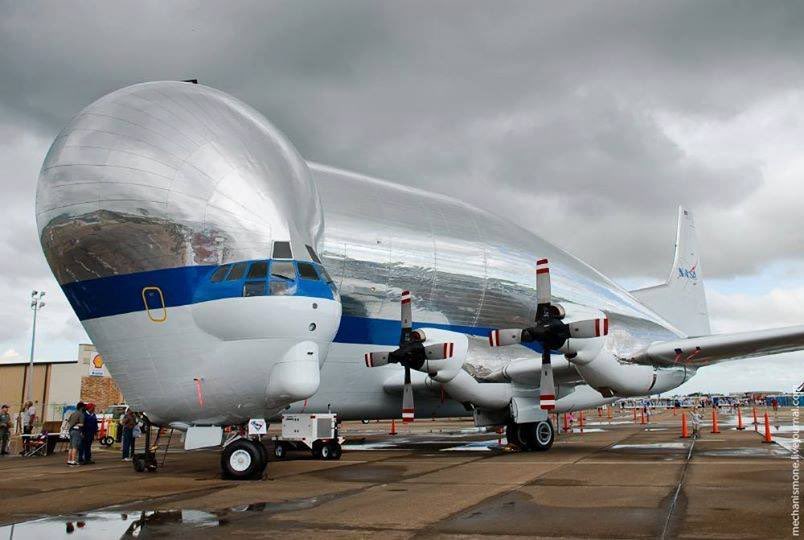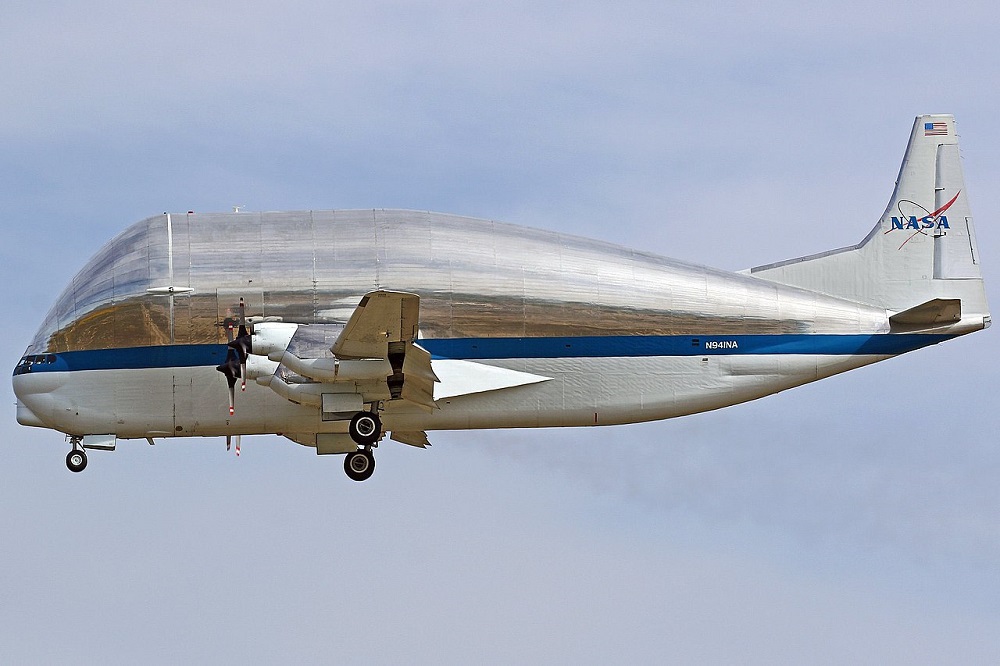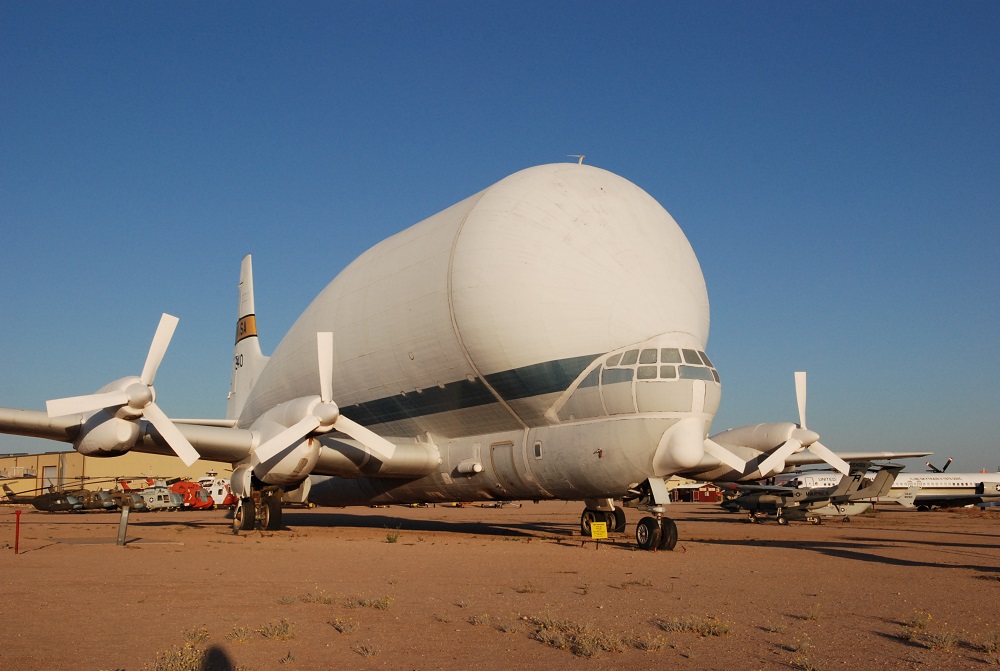| Aero Spacelines Super Guppy | Photo Gallery | ||
|---|---|---|---|
|
| |||
|
The Aero Spacelines Super Guppy is a unique and iconic aircraft known for its distinctive appearance and its critical role in transporting oversized cargo within the aerospace industry. Designed and built by Aero Spacelines, Inc., the Super Guppy is a specialized cargo aircraft that was originally developed in the 1960s to facilitate the transportation of large and bulky aerospace components, including rocket stages, space capsules, and other oversized equipment.
Key features of the Aero Spacelines Super Guppy include: Bulbous Fuselage: The most striking characteristic of the Super Guppy is its bulbous, teardrop-shaped fuselage. This design allows the aircraft to accommodate exceptionally large payloads that would be impossible to transport using conventional cargo planes. The aircraft's fuselage is hinged to provide access to the cargo compartment. Oversized Cargo Capacity: The Super Guppy boasts a cavernous cargo hold that can carry payloads weighing up to 54,000 pounds (approximately 24,500 kilograms). This exceptional cargo capacity has made it an indispensable tool for the aerospace industry, enabling the transportation of space exploration hardware and other oversized aerospace components. Unique Loading Mechanism: Loading cargo onto the Super Guppy is a specialized process. The aircraft's hinged nose can be opened, allowing cargo to be rolled directly into the cargo hold. This distinctive loading mechanism streamlines the transportation of large and cumbersome items. Four Turboprop Engines: To power its heavy cargo loads, the Super Guppy is equipped with four turboprop engines, typically Allison 501-D22C engines. These engines provide the necessary thrust to carry heavy payloads over long distances. History and Legacy: The Super Guppy's development was inspired by the need to transport components for the Apollo program, NASA's ambitious effort to land astronauts on the moon. Over the years, several versions of the Super Guppy have been produced, with each iteration featuring improvements and modifications to meet the evolving demands of the aerospace industry. Continued Service: Despite its vintage design, the Super Guppy has remained in service for several decades. It has been used by NASA, the European Space Agency (ESA), and various aerospace companies to transport critical space hardware and other oversized cargo. Its unique capabilities make it an invaluable asset for industries requiring the transport of large and unwieldy objects. In summary, the Aero Spacelines Super Guppy is an extraordinary cargo aircraft renowned for its ability to transport oversized and unwieldy aerospace components. Its distinctive appearance and specialized design have earned it a place of prominence in the world of aerospace logistics, ensuring that vital equipment reaches its destination safely and efficiently. Additional Notes: The first Aero Spacelines Super Guppy was built from the cockpit and fuselage of a C-97J Turbo Stratocruiser, the military version of the 1950s Boeing 377 Stratocruiser passenger plane. It used the wings from the Boeing B-29 Superfortress and the nose gear of a Boeing 707. Parts are used from the Boeing B-52D Stratofortress and it also has modified wing and tail surfaces. It was powered by four Pratt & Whitney T-34-P-7WA turboprop engines. A second version, the Super Guppy Turbine, was built with a completely redesigned fuselage and was powered with Allison 501-D22C turboprops. Four Super Guppy Turbines were built. The first Super Guppy is on display at the Pima Air & Space Museum in Tucson, Arizona. |
|||
Return To Gallery Index.
© The Aviation History On-Line Museum.
All rights reserved.
Posted 14 March 2022. Updated 21 September 2023.



